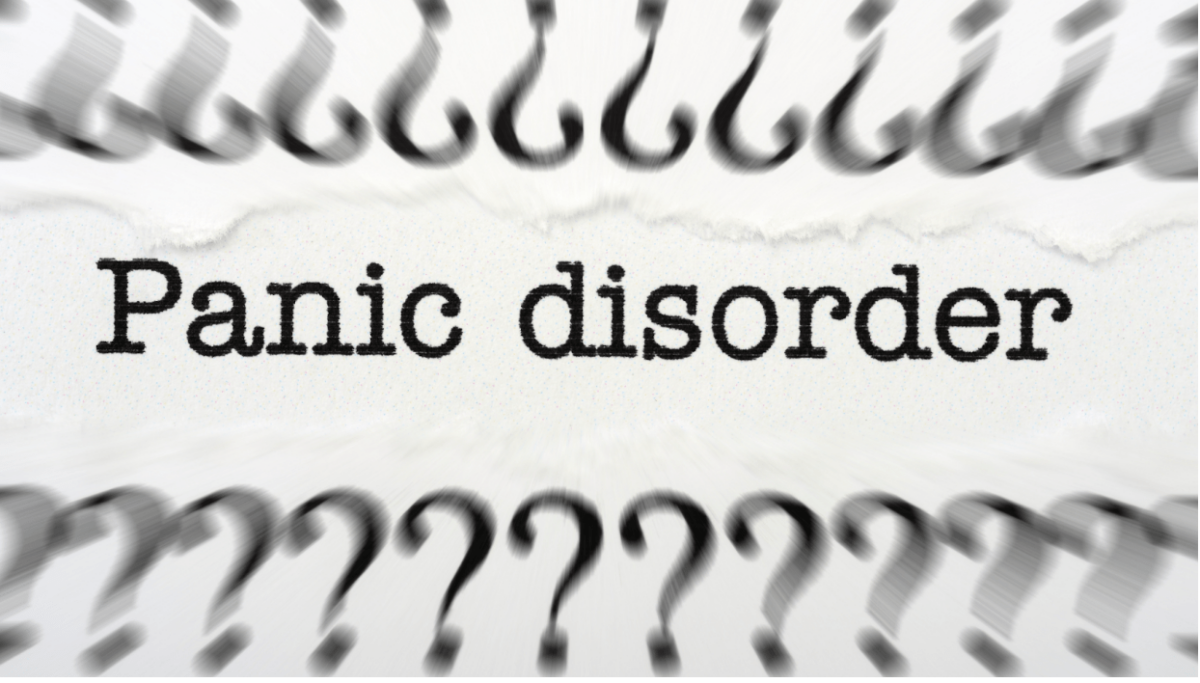

What is Panic Disorder? Symptoms and Treatment Options
Here’s an improved version of the content about panic disorder:
Understanding Panic Disorder: From Sudden Attacks to Lasting Help
Have you ever experienced a sudden surge of terror, accompanied by intense physical symptoms like a racing heart, difficulty breathing, and dizziness? These could be signs of a panic attack, a terrifying experience that can feel like a heart attack or impending doom.
While occasional panic attacks might occur in stressful situations, panic disorder goes beyond isolated incidents. It’s a chronic condition characterized by recurrent, unexpected panic attacks that significantly impact daily life.
Beyond the Initial Shock:
The fear associated with panic attacks can be crippling. Imagine your day unfolding normally, then suddenly being struck by overwhelming fear, breathlessness, and a sense of losing control. The terror intensifies as physical symptoms like chest tightness, sweating, and dizziness take hold. This intense episode, peaking within minutes, leaves you shaken and fearful of future attacks.
Unpredictable and Disruptive:
Unlike isolated panic attacks often triggered by specific situations, panic disorder attacks occur out of the blue. This unpredictability causes constant anxiety, fearing when the next one might strike. This fear can lead to avoidance behaviors, restricting activities and places to minimize the risk of an attack, significantly impacting daily life, work, and relationships.
Breaking the Cycle: Effective Treatment Options:
The good news is, even though panic disorder can be disruptive, it’s highly treatable with various effective options. These include:
- Psychotherapy: Techniques like cognitive-behavioral therapy (CBT) help identify and address negative thought patterns that contribute to anxiety and panic.
- Medication: Antidepressants and anti-anxiety medications can help manage symptoms and prevent future attacks.
- Relaxation techniques: Practices like deep breathing and mindfulness can provide tools for managing anxiety in the moment.
Seeking Help is the First Step:
If you experience recurrent panic attacks or suspect panic disorder, remember you’re not alone. Seeking professional help is crucial to break the cycle of fear and regain control of your life. Talk to your doctor or a mental health professional to explore treatment options and start your journey towards a calmer, more fulfilling life.
Defining Panic Disorder
Demystifying Panic Disorder: Beyond Sudden Panic Attacks
Many associate panic attacks with the terrifying experience of overwhelming fear and physical symptoms. While panic attacks are a hallmark of panic disorder, they’re not the same thing. Here’s a clearer picture:
Not Just Isolated Anxiety:
While experiencing a single panic attack might be unsettling, it doesn’t automatically translate to panic disorder. What sets them apart is their frequency and impact:
- Panic attacks: Can occur occasionally, often triggered by specific situations.
- Panic disorder: Involves experiencing unexpected, recurrent panic attacks, impacting daily life due to:
- Fear of future attacks: The constant worry about when the next one might strike becomes a heavy burden.
- Avoidance behaviors: To minimize the risk of an attack, people with panic disorder might avoid specific places, situations, or activities, potentially limiting their lives.
Recognizing the Signs:
If you’ve had four or more panic attacks in a short period (usually within a few months) and have significant anxiety or worry about future attacks, you might be dealing with panic disorder.
Beyond Feeling Scared:
Panic disorder’s impact goes beyond fear. It can lead to:
- Difficulty concentrating: The constant apprehension about future attacks can disrupt focus and daily tasks.
- Relationship strain: Avoiding situations and activities can put a strain on personal and professional relationships.
- Reduced quality of life: The fear and limitations imposed by the disorder can significantly impact overall well-being.
Finding Hope and Relief:
Panic disorder may be challenging, but effective treatment options are available. Seeking professional help, like therapy or medication, can offer valuable tools to manage anxiety, reduce the frequency and intensity of attacks, and regain control of your life.
Remember:
You’re not alone. Reaching out for professional support is the first step towards living a calmer, more fulfilling life.
6 Ways To Help You Overcome Social Anxiety
Panic Disorder Symptoms
As previously mentioned, just because you have panic attacks doesn’t mean you have panic disorder. However, panic disorder doesn’t exist without panic attacks. So the panic disorder symptoms mirror the symptoms of panic attacks but occur along with the dread of future occurrences.
- rapid heartbeat
- sweating
- tingling fingers
- nausea
- chest pains that may mimic heart attack symptoms
- dizziness
- fear of losing control or dying
- shaking
- dizziness or lightheadedness
- shortness of breath
- headache
Why Using Alcohol to Cope With Anxiety Doesn’t Help
Causes and Risk Factors of Panic Disorder
Unfortunately, the jury is still out on the exact cause of panic disorder. However, experts agree panic disorder occurs due to a combination of environmental and genetic factors.
Genetic Factors
Genetics play a significant role in many mental health concerns, panic disorder included. Suppose you have relatives, namely parents, who deal with or have dealt with panic disorder themselves or anxiety, depression, or bipolar disorder. In that case, you, too, are at elevated risk for all of the above.
Of course, that doesn’t mean you’re sentenced to experiencing any of these concerns. It simply means you are more likely to deal with them than individuals without family members dealing with these issues.

Environmental Factors
There are several environmental risk factors for developing panic disorder. Some of these include:
- childhood abuse (sexual, physical, emotional)
- death of a loved one
- drug use
- interpersonal problems
- disease diagnosis
Risk Factors
There are some risk factors you can control and others you can’t. Here are the most common risk factors for developing panic disorder:
- family history of mental health issues
- smoking
- sensitivity
- respiratory problems
- anxiousness
- other mental health concerns
- alcohol or other substance use disorder
Do You Really Know If You’re Masking Depression and Anxiety?
Treatment Options for Panic Disorder
Having panic disorder is certainly no walk in the park. It can disrupt your everyday life and negatively impact your school, work performance, and relationships. The good news is that panic disorder is treatable.
You need experienced help from a mental health professional to treat panic disorder effectively. Our team of extraordinary physicians at BOLD Health in Encinitas, CA, are highly trained to help you work through and overcome your symptoms using science-backed proven treatment methods.
The most common treatments for panic disorder include the following, which are all offered at BOLD Health:
Tackling Anxiety and Panic Attacks: Dual Approach for Lasting Relief
Unveiling Underlying Triggers and Fears:
Our evidence-based psychotherapy sessions, led by dedicated clinicians, empower you to explore the root causes of your anxiety and panic attacks. Through collaborative exploration, you’ll identify and understand your unique triggers, leading to personalized strategies for overcoming them.
Building Healthy Coping Mechanisms:
Beyond mere understanding, we equip you with powerful coping skills to manage anxiety and prevent panic attacks. This includes evidence-based techniques like:
- Cognitive-behavioral therapy (CBT): Learn to identify and reframe negative thought patterns that fuel anxiety.
- Exposure therapy: Gradually confront your fears in a safe and controlled environment, building resilience.
- Relaxation techniques: Master tools like deep breathing and mindfulness to manage stress and anxiety in the moment.
Tailored Medication Management (if needed):
For appropriate cases, medication can be a valuable adjunct to therapy. Our experienced clinicians carefully assess your individual needs and prescribe medication only if it can offer additional support, closely monitoring its effectiveness and making adjustments as necessary.
Additional Enhancements:
- Collaborative care: We work closely with your primary care physician or other healthcare providers to ensure a unified treatment plan.
- Support groups: Connect with others facing similar challenges in a safe and understanding environment.
- Educational resources: We provide informative materials to deepen your understanding of anxiety and panic attacks.
Remember:
- Recovery is possible! Combining evidence-based therapies with personalized support empowers you to manage your anxiety and achieve lasting well-being.
- Take the first step: Schedule a consultation to discuss your unique needs and develop a personalized treatment plan.
Our intensive outpatient program in San Diego (IOP) is a step up from traditional therapy and medication management. When enrolled, you’ll receive individual and group therapy sessions and medication management (if needed) over ten weeks.
You’ll attend therapy sessions three days per week to get the help you need during the day while still being able to go home in the evening to your responsibilities.

How an IOP Can Help You Overcome Anxiety Disorders
Why You Shouldn’t Let Panic Disorder Go Untreated
Managing Panic Disorder for Improved Well-being:
While facing daily fear is a significant burden, leaving panic disorder untreated can lead to additional challenges. While this information is not intended to scare anyone, understanding potential consequences can motivate seeking help.
Potential Concerns of Untreated Panic Disorder:
- Impact on daily life: Panic attacks can interfere with work, school, and social activities, potentially affecting performance and overall quality of life.
- Financial difficulties: Medical costs, job disruptions, or avoidance of certain situations due to fear can create financial strain.
- Substance misuse: Some individuals may attempt to self-medicate with alcohol or drugs to cope with anxiety, leading to addiction and its own set of risks.
- Social isolation: Avoiding social situations due to fear of panic attacks can lead to loneliness and isolation.
- Development of phobias: Repeated panic attacks in specific situations can lead to phobias associated with those places or activities, further restricting daily life.
- Increased risk of suicide: In severe cases, untreated panic disorder can contribute to thoughts or attempts of suicide.
Seeking Help and Hope:
It’s important to remember that panic disorder is treatable. Effective therapies, including cognitive-behavioral therapy and medication, can significantly improve symptom management and overall well-being. Don’t hesitate to reach out for professional help and reclaim a life free from constant fear.
Disclaimer:
This information is intended for general understanding and shouldn’t be substituted for professional medical advice. If you are struggling with panic disorder, please consult a qualified healthcare professional to discuss your individual needs and treatment options.
You don’t have to live this way. There is help available. You can regain control over your life again.
Get Quality Treatment for Panic Disorder at BOLD Health

Whether you’re interested in psychotherapy, medication management, or our highly-effective intensive outpatient program in San Diego, you’ll get the best care at BOLD Health. We understand the challenges that come with anxiety and panic disorder. Our physician-owned and operated facility houses a team of trained, experienced experts who can help you break the vicious panic cycle.
Contact us to learn more about our IOP in San Diego or any of our other available panic disorder treatment options. It’s time to get your life back. And we’re ready to help.


